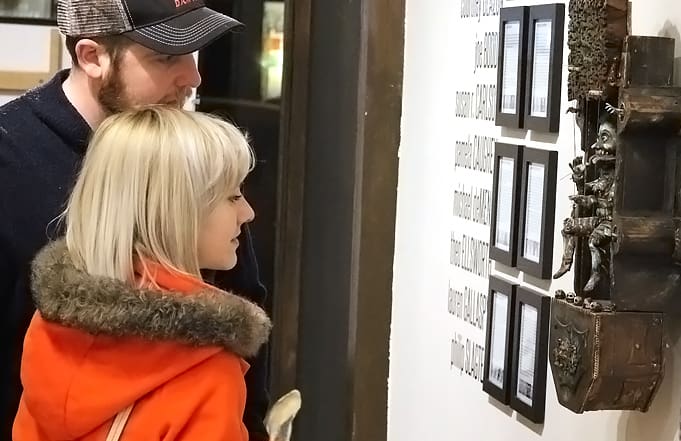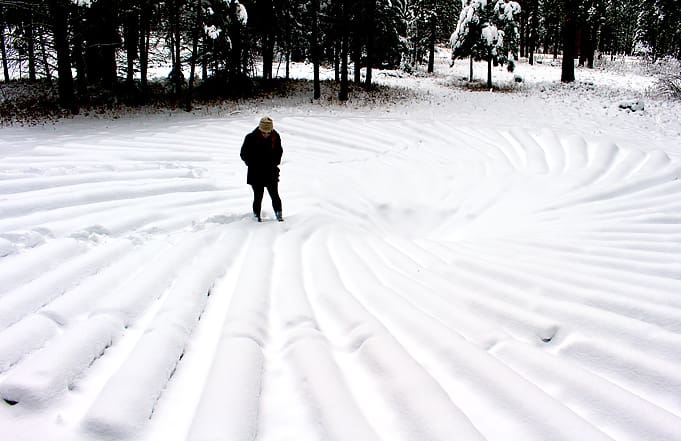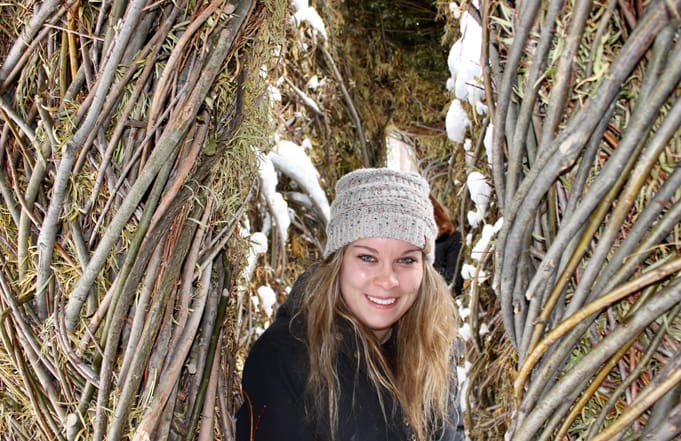January 13, 2018
University of Montana Western Art Club President, Seth Hogan, documented the Art Club’s field trip to explore the art scene in Missoula, Mont. and the Sculpture in the Wild environmental sculpture park in Lincoln, Mont.

The Montana Western Art Club, with instructor Tyler Nansen, explored the bustling activities surrounding Missoula’s First Friday Art Walk, a local favorite event that takes place the first Friday of each month. Art Galleries and businesses open their doors and stay open late to encourage the community to join in the exploration of a wide range of artwork and performances.
Members of the club were able to explore a wide range of gallery experiences from the traditional to the “homegrown” arts movements, which is seeing an increasing number of artists coming together to share their art from their homes and garages.
According to Hogan, “it was a great experience to learn about the different venues available from student to professional artists to display their works, and how that process works.”

The next day, the students explored the “Blackfoot Pathways: Sculpture in the Wild” International sculpture park located in Lincoln, Mont.
According to its website, the park “celebrates the rich environmental, industrial and cultural heritage of the Blackfoot Valley. Sculptors have been invited to create significant site-specific works of art using the materials – natural and industrial – that are associated with the community’s economic and cultural traditions.”

Founded in 2014, the park features permanent and temporary sculptures and interactive installations, created by artists from all over the world. One of the pieces in the park was created by Montana Western art instructor, Tyler Nansen.

“Bat Beacons” is comprised of 16 20-foot-tall poles positioned in a grid, each topped with a bat roosting box. The piece serves as home for the bats, as well as an educational tool, “questioning ways that we view art and ecology.”
Other pieces in the park include a variety of permanent and temporary installations made from materials including wood, branches, newspapers, metal and found objects.

“On this trip, it was amazing for us to be able to see what is possible to create with natural materials, and places to apply for to display our art,” said Hogan.